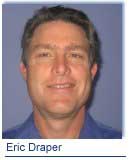|
 Water Bill Quietly Flows into Florida Law Water Bill Quietly Flows into Florida Law
While much of the media attention focused on controversial issues such as slot machines and lobbyist reform, a very significant bill quietly flowed through the Legislature. SB 444, which creates the Water Protection and Sustainability Program, will provide solutions to the impact of Floridaās population growth on water supply and quality.
Senate Bill 444 is the first significant combination of water pollution, water supply and water concurrency policy in a single law. Even more significant is the fact that normally adversarial interest groups joined hands to bless this proposal. Farmers, builders, cities and utilities stood with leading conservation groups to endorse the legislation.
Much of the credit for the passage of this bill goes to Sen. Paula Dockery (R-Lakeland), who steered this reform through the treacherous rocks of competing interests. This legislation is the result of a working group Sen. Dockery put together last summer.
Promising to listen to all but granting special favors to none, Sen. Dockery was able to forge a win-win that lets Florida grow while protecting our fresh water. Environmentalists wanted guarantees that new growth would not take water from springs and rivers or over pump groundwater. Business wanted certainty. Cities and utilities wanted help with the costs of providing water supplies. Farmers wanted fairness as they yield some of their traditional use of water. Everyone got something and the public won.
On the issue of water pollution, Dockery herself summed it up best, ćBusiness gets a certain safe harbor and certainty and the environment gets a workable program to move from setting clean up targets to getting clean up done.ä
While water is now abundant in the Sunshine State, Florida is the fourth most populous state and the largest user of irrigation water east of the Mississippi. By 2020, Floridaās population is projected to grow by nearly five million residents, roughly a 29% increase. By 2020, total water use is expected to be about 9.3 billion gallons a day, an increase of nearly two billion gallons a day over 1995 levels. Dockery recognized that waiting until there is a severe water crisis to deal with this issue would add expense and create more conflict.
The legislationās boldest impact is to stop thinking of the product of wastewater treatment plants and stormwater ditches as a waste product and to start regarding this as the best source of more water for our growing state. Treated wastewater can be used for landscape and agricultural irrigation instead of being dumped into the sea. Stormwater can be added to drinking water supplies instead of running off into lakes and estuaries where it creates pollution problems.
The legislation directs Floridaās five water management districts to promote alternative water supply ö a fancy name for reused wastewater and reclaimed storm water ö projects to both accommodate growth and to reduce the use of groundwater supplies. The environmental benefit of using alternative water supply ö including reclaimed, storm water and desalination ö is reducing water withdrawn from our aquifers.
A second major outcome of the bill is linking development and water resources by requiring local governments to identify and develop water supply concurrently with approval of new development. New development would not take place if there is not enough water. Cities and counties have to make their land use plans consistent with regional water supply plans.
Finally, to improve water quality the legislation updates Florida law relating to the federal Clean Water Act requirement that states identify and set clean up targets for waterways that are polluted.
The new program uses Basin Management Action Plans to set timelines and allocate pollution reductions among dischargers. This mostly affects polluted runoff from farms and developed areas. Once the plans are in place, the only way a discharger can avoid the risk of being ordered to clean up is to implement the clean-up activities specified in the plans.
Sen. Dockeryās initiative provides money for new water projects and funding for existing water improvement programs that have been put on hold because of a lack of resources. Her program would help build more drinking water and sewage systems, reduce water pollution and create more regional water resources.
The bill was signed by the governor in June.
While it doesnāt have the excitement of bells, lights and dropping coins found in slot machines, this legislation will have a major impact on the future of Florida and the ability to keep this precious resource flowing for nature and for growth.
Eric Draper is policy director of Audubon of Florida. |

